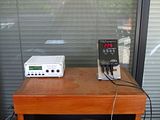I'm not very computer savy, but I've done a lot of reading here and elsewhere on both the Stoker and Guru products. There's been mention that the Stoker may not respond as quickly or appropriately as the Guru, to changes in pit temps. Can anyone who knows both programs, explain the differences in how they work?
I'm really not trying to knock the Stoker...it's obviously a great product. In my lack of computer knowledge, I am only trying to understand how these things work and what differences there may be in their programs.
I'm really not trying to knock the Stoker...it's obviously a great product. In my lack of computer knowledge, I am only trying to understand how these things work and what differences there may be in their programs.

